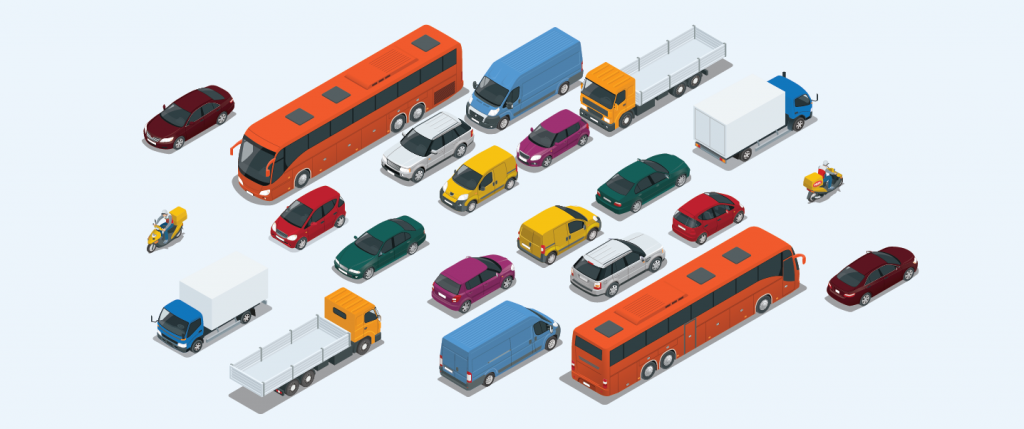Insights
Driving the electrification of public transport forward
January 2, 2024In recent years, India has moved to scale up its climate financing. From the issuance of sovereign green bonds to the introduction of a framework for green deposits, efforts continue to ensure that finance is generated and channelled towards the prevention or mitigation of climate change. Developing sustainable public infrastructure, such as electric buses, is an important part of such efforts.

The government’s introduction of the Faster Adoption and Manufacturing of (Hybrid and) Electric Vehicles in India Scheme (FAME), the National E-Bus Programme, the PM E-Bus Sewa Scheme and the electric vehicle policies of various states have encouraged the private sector to enter the e-bus space. NITI Aayog, the official innovation think-tank, and the government-run Convergence Energy Services Limited (CESL) have invited bids and issued concessions for the procurement, supply and operation of e-buses. Various state transport undertakings (STU) have been involved in implementing these concessions. NITI Aayog aims to put 50,000 e-buses into service by 2027, showing government ambitions.
Read More+
The government has adopted two e-bus concessions models. The main one, gross cost contracting or wet leasing, involves a private player procuring, owning, operating and maintaining the e-buses. The contractor develops and operates the charging infrastructure at the bus depot, which is leased to it by the particular state government. In turn, the STU pays a per-kilometre fee to the concessionaire. The authority incentivises the private entity by paying a fee linked to the minimum distance each bus is estimated to run in a month. Fares collected from bus users are credited to the STU’s account.
In the other model, net cost contracting or dry leasing, the concessionaire owns, supplies and maintains each bus, but the operation of the bus is the responsibility of the STU. The STU pays a per-bus fee to the contractor, linked to the number of buses in service in a particular month.
While e-buses are important in achieving sustainable public infrastructure, private sector involvement has yet to produce the expected results. Concerns such as an acute shortage of STU funds, together with such bodies’ lack of experience in dealing with e-bus concessions are deterring private players. Reports suggest that the CESL has considered cancelling a recent tender for more than 4,500 e-buses because of a lacklustre response from bidders. As investment for such projects from lenders supports bidders, financing these initiatives will not happen if there are no bidders in the first place.
Lenders themselves must be aware of structuring frameworks when providing finance for e-bus projects. Model concession agreements for e-buses, including a recent draft published by the CESL for stakeholder inputs, have been based on concession agreements issued by the National Highways Authority of India for road projects. Worries about those road concessions could extend to e-buses, including restrictions on creating security over project assets and the release of termination payments. The latter is highly concerning because STUs may have no funds to release when projects are terminated. This obviously prevents the recovery of amounts due. Long-standing issues such as the calculation of termination payments and overlapping substitution procedures, which have long been acknowledged, have not been resolved in the model agreements.
However, e-bus concessions offer certain funding advantages. As the buses themselves are owned by the concessionaires, they are not project assets and can be charged in favour of the lenders. the CESL’s draft concession agreement provides that any monetisation of carbon assets or carbon credits generated by the operation of e-buses are credited to the concessionaire. This would allow for the creation of charges over such assets or receivables and would provide for the perfecting of such charges. The restructuring or rescheduling of debt would not require approval from the STU, so long as this does not impact the total project cost.
Efforts need to be increased significantly to ensure adequate participation from the private sector and the flow of finance in the e-bus segment. With India having sought a clear roadmap on climate finance at COP28, it should further strengthen this small but important segment of climate financing.
This article was originally published in India Business Law Journal on 2 January 2024 Co-written by: Anurag Dwivedi, Partner; Shashwat Bhaskar, Associate; Chaitanya Kashyap, Associate; Amogh Mittal, Associate. Click here for original article
Read Less-
Contributed by: Anurag Dwivedi, Partner; Shashwat Bhaskar, Associate; Chaitanya Kashyap, Associate; Amogh Mittal, Associate
Disclaimer
This is intended for general information purposes only. The views and opinions expressed in this article are those of the author/authors and does not necessarily reflect the views of the firm.


